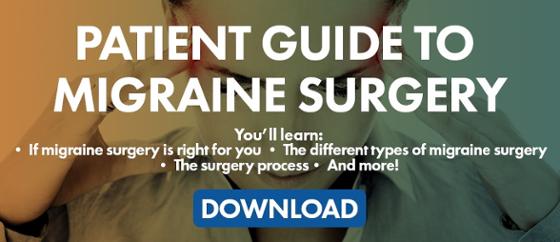Migraine pain is bad enough, but the symptoms that often go along with the head pain can add to the distress. Many migraine sufferers experience a range of other symptoms, which often show themselves in the skin itself, the eyes, how the face looks, or a heightened sensitivity from normal stimulus that shouldn’t cause discomfort.
Here are some of the things you may experience as well as a pounding head when you have a migraine attack.
Allodynia
This is probably the most distressing condition associated with migraines, and is certainly the most documented and common. If you suffer from daily migraines, chances are you’re among the 68 percent of people who experience cutaneous allodynia. Even amongst people with episodic migraines, 63 percent reported heightened skin sensitivity in a 2008 study.
So what is allodynia, and is there anything you can do to help or ease it?
Allodynia is a painful sensation in the skin that is caused by everyday touch from items that ordinarily don’t cause pain.
Examples of items that can trigger allodynia include:
- Clothing
- Bedding
- Water (such as when showering)
- Brushing hair
- Gentle touch from others
- Wearing jewelry such as earrings or a necklace
- The breeze from a fan
More women than men suffer from allodynia; it is also more prevalent in obese people. It most commonly affects the face, neck and scalp although it’s not restricted to these areas.
What Causes Allodynia?
Migraines are recognized as a progressive condition, with central sensitization happening when neurons develop a kind of ‘pain memory’. They form new pathways to the brain, making pain easier and faster to transmit. When the new pathways have been forming for a while, allodynia is often the result. The more often you can ward off an attack, the less likely you are to develop the central sensitization that can lead to the condition.
Can Anything Be Done?
Once Allodynia presents itself, it is very hard to treat or prevent in the future. This is one reason why it’s vital for migraine sufferers to understand their triggers, and do everything necessary to ward off an attack when they experience the first symptoms.
Research shows there’s just a small window of time for action. The first window is within ten to twenty minutes of the first symptoms appearing; the second is within one to two hours of the headache itself starting. Often, migraine pain is treated with triptans and these have a relatively short time span in which to work. If that time passes without effective medication, allodynia can appear and the triptan medication becomes insufficient to deal with the pain.
Understanding the existence of allodynia and why pain medication can sometimes be ineffective may encourage you to speak more deeply with a headache specialist. Different kinds of triptans may be more effective, and a change in medication can bring extra relief.
Allodynia symptoms usually disappear as the migraine subsides, although in some people it can continue for some time afterwards.
Changes in Skin and Appearance
As well as all the other symptoms that can accompany migraine attacks, such as nausea or vomiting, mood changes or sensitivity to light and sound, physical appearance changes are also possible.
If you’ve never noticed changes in your appearance during a migraine, it might be worth taking a good look in the mirror next time and noting down any changes you see. If your current medication doesn’t give sufficient pain relief, notice in particular if any physical changes occur mainly on one side of your face (especially the side where the pain is) as this could indicate a different condition.
Some of the physical changes you might experience include:
- Bloodshot eyes
- Facial swelling
- Sweating
- Skin paleness
- Black circles around your eyes
- Clammy hands or feet
- Swelling eyelid
- One pupil larger than the other
Many of these are autonomic symptoms and are caused when the pain-sensing nerves in the brain dura (the membrane covering the brain) are irritated. Some of the symptoms can result in an initial misdiagnosis of migraine as a sinus headache, since the stuffy nose and feelings of facial pressure are similar.
Not everyone experiences the same migraine symptoms, and different types of migraine produce different autonomic symptoms. Cluster headache sufferers, for instance, are more likely to experience eyelid swellings or tearing, nasal congestion or a runny nose.
It’s unlikely the symptoms are caused directly by medications although side effects are possible. If you’re concerned, or feel the additional symptoms are excessive, consulting a medical specialist may reassure you, or lead him or her to suggest a change in your medication.

